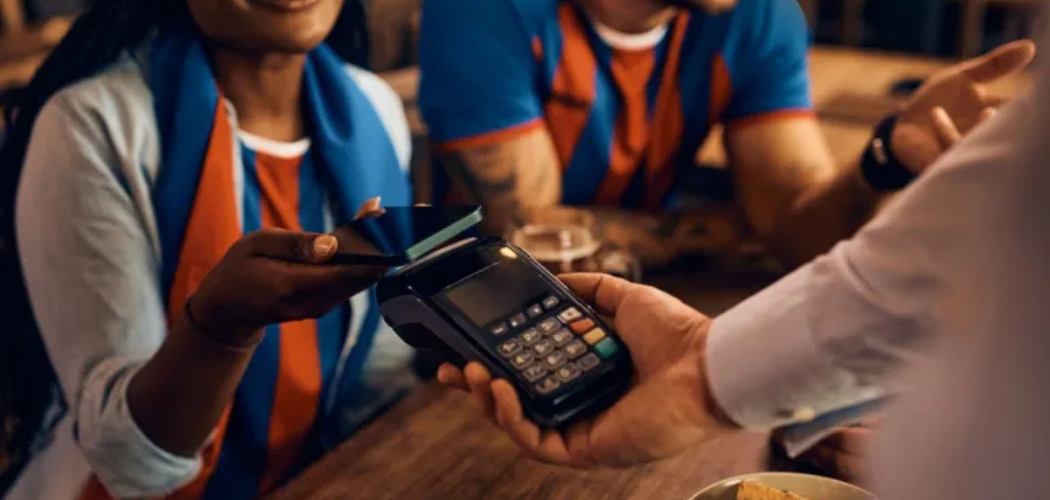2018 was a complex year for loyalty professionals and marketers, marked by several high-profile developments at the program level and the ongoing evolution in how brands approach loyalty.
In terms of major program shifts, we saw the demise of Plenti, the complicated, American Express-owned coalition marketing program; the consolidation of Marriott Rewards and the Starwood Preferred Guest Program; the “will they, won’t they” drama of Air Canada’s re-acquisition of Aeroplan; and the launch of Nordstrom’s mobile loyalty app, Nordy Club.
What these headline-grabbing mergers, acquisitions, launches and closings didn’t obscure are the fundamental changes taking place … loyalty is getting more personal, more dependent on mobile channels, more integrated with payments, and more valuable than ever to brands in competitive environments.

Having worked on the team that launched the Fuel Rewards® program (still the most successful national coalition marketing program in the U.S.), I’m proud to say – I’m optimistic about the future of loyalty. Here’s what I see coming in this space over the rest of the year and into 2020.
Refining Personalization Marketing
If 2018’s loyalty buzzword was ‘personalization,’ then this will be the year personalization actually gets better. Loyalty programs that offer personalization features consistently score higher in consumer satisfaction. However, the ways in which brands implement their personalization strategies will improve and become more refined. To do this, loyalty programs (and brands in general) will increase their ability to capture customer data, allowing their personalization efforts to become more accurate, more intimate without being intrusive, and ultimately more effective. Many loyalty programs will be modified to put more of a premium on collecting customer information as part of the process. Nordstrom’s Nordy Club is a good example of this, incentivizing members to complete a profile to earn points – and use that information to provide better personalized offers and communications.
Smarter Personalization
Just as personalization marketing will become more refined, the way personalized loyalty offers are deployed will become smarter. Predictive offer scoring, a relatively new concept in 2018, will be more widespread in 2019 as brands become better able to manage the intersection between customer data, personalization constructs, and real-time offer deployment. To achieve this, brands will need to lean on connected data – combining information from the loyalty program with point-of-sale data and even marketing channel data (social media, SEO, etc.) to build a solid understanding of their customers. When brands know what resonates with their customers through loyalty program data, tailor offers to their individual preferences and deliver those offers at the optimal time to prompt a purchase, this trend will be fully realized – and brands will enjoy the incremental revenue boost that goes along with it.
Payment and Loyalty Convergence
Another trend I see defining loyalty in 2019 is the increased convergence of loyalty programs and payments. Some loyalty programs have always been tied to specific payment methods, i.e. members earn points only when they pay with a particular credit card. Other loyalty programs are payment-agnostic, allowing consumers to earn rewards or points regardless of how they pay. Many loyalty programs have evolved to support both; Target, which has always rewarded its REDCard holders with 5% cash back when they paid with the ACH-powered, checking-account-linked card, announced that loyalty program members could earn (lesser) rewards when using another payment method.
Some payment-agnostic programs are moving in the other direction, integrating payment options into their existing loyalty programs. Brands have recognized the value of combined loyalty+payment, and as the technology improves to weave these two aspects together more seamlessly, we’ll see more brands pursuing this approach in the year ahead.
Less Spend on Web
The fact that loyalty programs are highly invested in the mobile channel isn’t new, though we think it may have reached a peak in 2018. On the whole, we see this as a positive development for the loyalty sector – 69% of consumers want digital or mobile loyalty cards, and a majority of those will spend more with a brand that offers mobile capability. But while brands might have simply augmented their digital and physical loyalty operations with mobile, 2019 will be the year they begin to reallocate investment dollars from online to mobile. This means more simplified, less feature-rich traditional loyalty websites, and more adaptive mobile websites and apps.
Coalition Loyalty Reasserts Its Value
The decline of Plenti and the trend of major brands bringing their loyalty programs in-house may have made 2018 seem like a negative year for coalition marketing programs. But multi-merchant programs, including our own Fuel Rewards® program, actually thrived in 2018, adding more consumer members and retail participants and breaking records for engagement and redemption.
Programs that focus on driving frequency – while allowing retailers to maintain their own brands and the equity they have invested in them - are the programs that deliver the most value. Provided, of course, those programs also deliver relevant and clear value to consumers.
Coalition marketing programs that offer these benefits and are “bolted on” to existing loyalty strategies will become more prevalent this year, reinforcing the fact that multi-merchant programs can work and thrive in the North American market.
Connection Creates Efficiency
It seems like every year, advances in marketing and loyalty technology create new capabilities for marketers, and 2018 was no different. But in 2019, more marketers will find value in having these capabilities connected into one manageable platform. Instead of leaning on separate systems to handle loyalty program execution, CRM, analytics, and content management, marketers will seek out services and partners that can bundle these tools. This type of consolidation will not only provide convenience, but also value, as marketers will need to deal with fewer tech vendors.
Already, 2019 is shaping up to be a strong year for loyalty programs across different retail sectors. Brands will get better at personalization, both refining it and facilitating smarter offer deployment strategies, and you can expect to see more convergence of loyalty and payment systems. Investment in loyalty programs’ digital strategies will be diverted to the mobile channel – both native apps and mobile web – as consumers continue to demonstrate their preference to engage through their mobile devices. And we also expect a positive reevaluation of coalition marketing programs that leverage relevant rewards currencies to drive visit frequency, redemption, and revenue.
Watch our Executive Interview with Brandon here.
Brandon Logsdon is SVP of Marketing Cloud Solutions for PDI Software, oversees the company’s loyalty division in addition to its MarketLink and Data monetization services. Prior to PDI, Brandon served as Excentus’ President and CEO, and was the driving force behind the launch of the most successful national coalition marketing program in the U.S., the Fuel Rewards® program.




